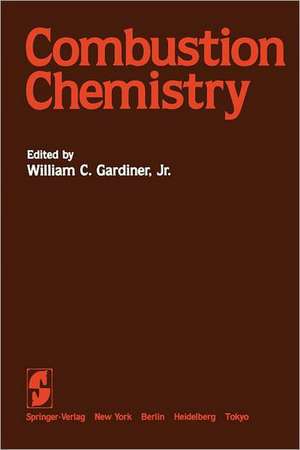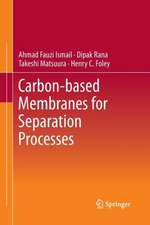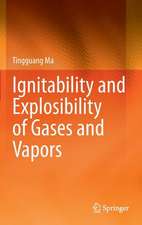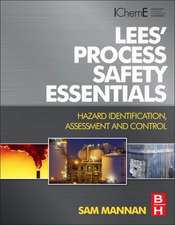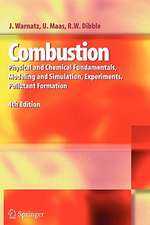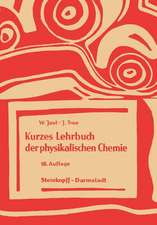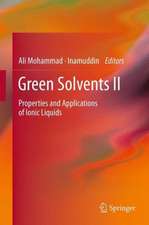Combustion Chemistry
Editat de W. C. Jr. Gardiner Contribuţii de A. Burcat, G. Dixon-Lewis, M. Frenklach, R. K. Hanson, S. Salimian, J. Troe, J. Warnatz, R. Zellneren Limba Engleză Paperback – feb 2012
Preț: 401.42 lei
Nou
Puncte Express: 602
Preț estimativ în valută:
76.84€ • 83.49$ • 64.58£
76.84€ • 83.49$ • 64.58£
Carte tipărită la comandă
Livrare economică 21 aprilie-05 mai
Preluare comenzi: 021 569.72.76
Specificații
ISBN-13: 9781468401882
ISBN-10: 1468401882
Pagini: 528
Ilustrații: XIII, 509 p.
Dimensiuni: 155 x 235 x 28 mm
Greutate: 0.73 kg
Ediția:Softcover reprint of the original 1st ed. 1984
Editura: Springer
Colecția Springer
Locul publicării:New York, NY, United States
ISBN-10: 1468401882
Pagini: 528
Ilustrații: XIII, 509 p.
Dimensiuni: 155 x 235 x 28 mm
Greutate: 0.73 kg
Ediția:Softcover reprint of the original 1st ed. 1984
Editura: Springer
Colecția Springer
Locul publicării:New York, NY, United States
Public țintă
ResearchCuprins
1. Introduction to Combustion Modeling.- 1. Terminology of reaction kinetics.- 2. Rate laws and reaction mechanisms.- 3. Physical constraints on gas-phase combustion reactions.- 4. Differential equations of homogeneous reaction without transport.- 5. Methods of numerical integration.- 6. Interpretation of combustion modeling profiles.- 7. References.- 2. Computer Modeling of Combustion Reactions in Flowing Systems with Transport.- 1. Introduction.- 2. Conservation or continuity equations, and other useful relations.- 3. Formulation of transport fluxes.- 4. One-dimensional premixed laminar flame properties by solution of the time-dependent equations.- 5. Premixed laminar flames and kinetic studies.- 6. Two further solution techniques.- 7. Implicit methods and general reactive flow problems.- 8. Operator splitting techniques in multidimensional systems.- 9. Chemical quasi-steady-state and partial equilibrium assumptions in reactive flow modeling.- 10. Concluding remarks.- 11. Nomenclature.- 12. References.- 3. Bimolecular Reaction Rate Coefficients.- 1. Introduction.- 2. Fundamental concepts.- 3. Theoretical predictions of bimolecular reaction rate coefficients.- 4. Comparison between experiment and theory for rate coefficients of selected bimolecular gas reactions.- 5. Summary and conclusions.- 6. Acknowledgments.- 7. References.- 4. Rate Coefficients of Thermal Dissociation, Isomerization, and Recombination Reactions.- 1. Introduction.- 2. General mechanism of thermal dissociation and recombination reactions.- 3. Low-pressure rate coefficients.- 4. High-pressure rate coefficients.- 5. Rate coefficients in the intermediate fall-off range.- 6. Conclusions.- 7. References.- 5. Rate Coefficients in the C/H/O/System.- 1. Introduction.- 2. General features of high-temperaturehydrocarbon combustion.- 3. Reactions in the H2/O2 system.- 4. Reactions of CO and CO2.- 5. Reactions of C1-hydrocarbons.- 6. Reactions of C2-hydrocarbons.- 7. Reactions of C3- and C4-hydrocarbons.- 8. Mechanism of small hydrocarbon combustion.- 9. Acknowledgments.- 10. References.- 6. Survey of Rate Constants in the N/H/O System.- 1. Introduction.- 2. Organization.- 3. N/O reaction survey.- 4. N/H reaction survey.- 5. N/H/O reaction survey.- 6. N/H/O rate constant compilation.- 7. References.- 7. Modeling.- 1. Introduction.- 2. Basic concepts and definitions.- 3. Construction of models.- 4. Parameter estimation.- 5. Adequacy of fit.- 6. Design of experiments.- 7. Dynamic models in chemical kinetics.- 8. Closing remark.- 9. Acknowledgments.- 10. References.- 8. Thermochemical Data for Combustion Calculations.- 1. Introduction.- 2. The polynomial representation.- 3. Extrapolation.- 4. Thermochemical data sources.- 5. Approximation methods.- 6. Thermochemical polynomials in combustion chemistry.- 7. Required accuracy of thermochemical information.- 8. Acknowledgment.- 9. References.- Appendix A Program for finding coefficients of NASA Polynomials.- Appendix B Program Written by A. Lifshitz and A. Burcat for Evaluating the Coefficients of the Wilhoit Polynomials.- Appendix C Table of Coefficient Sets for NASA Polynomials.
